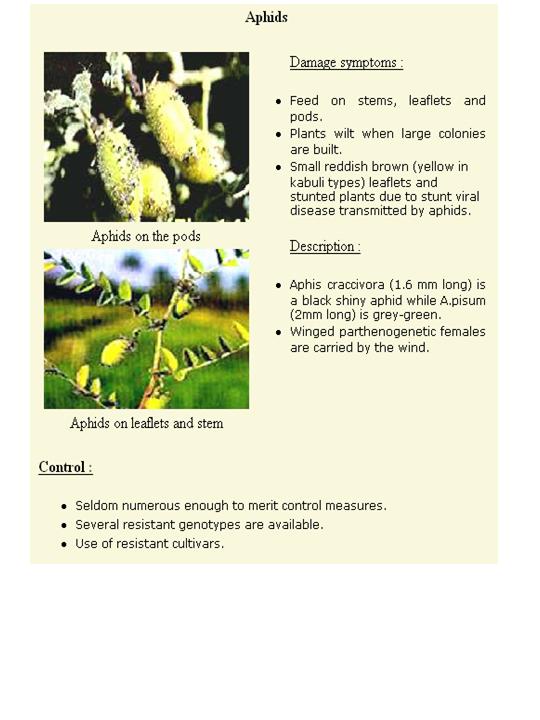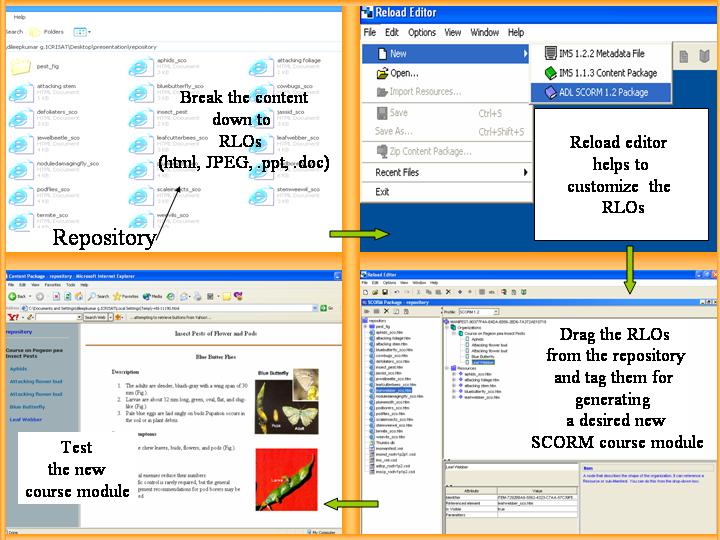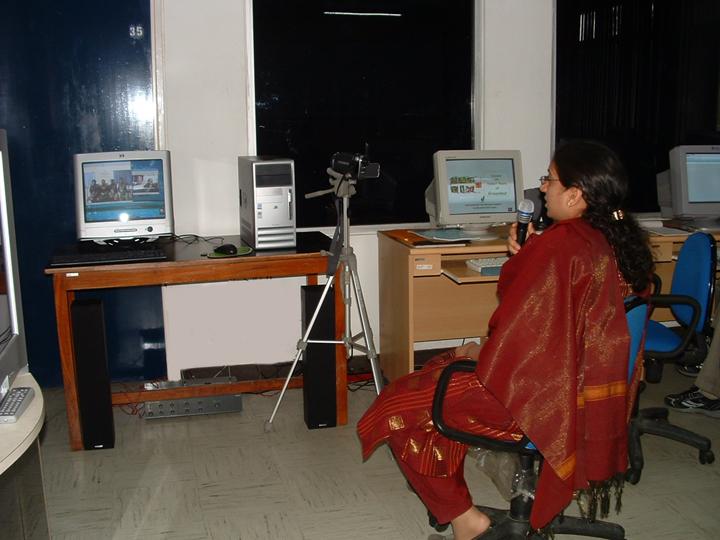|
Rapid Customization of Reusable Learning Objects (RLOs): A new paradigm for Content Generation and Localization for Open Distance Agricultural Education and Extension Dileep Kumar Guntuku, ICRISAT, India Abstract
INTRODUCTION
In many parts of the world, dissatisfying experience in conventional agricultural education and extension have induced the search for more appropriate ways to deal with the complexity of rural development and create sustainable forms of agriculture. As a result different technology mediated approaches were emerged for satisfying the learner needs. It includes the delivery of content via internet, intranet/extranet, audio and videotape, satellite and CD-ROM. Such applications are called as open distance education approaches i.e., computer-based learning, web-based learning, virtual classrooms and digital collaboration.
Advances in Information and Communication technologies, specifically Multimedia, Networking, and Software Engineering have promoted the apparition of a huge amount of learning resources. But most of this electronic learning content is being developed for a specific purpose based on a specific technology for satisfying the content needs of learners in an open learning approach.
The public agricultural extension and education systems can not afford to create the electronic learning content for specific purposes. Because in many parts of the world the content and information needs of the learners, farm families varies from region to region. And the most crucial problem that exists today is the creation of need based location spcific electronic learning content, for satisfying the information needs of learners and farm families. This is due to the development of electronic learning content for a specificpurpose based on a specific technology is highly expensive and time consuming process.
In this paper, we desribe a paradigm for rapid generation of need based content from a generic available Reusable Learning Objects (RLOs) pool, for satisfying the content needs of open distance agricultural education and extension systems in an effordable way at minimal required infrastructure.
REUSABLE LEARNING OBJECTS
RLO is a specific chunk of digitized instructional content that can be reused in many different courses. According to Dahl and Nygaard, 1966 Learning Objects are elements of a new type computer-based instruction grounded in the object-oriented paradigm of computer science, Object-orientation highly values the ceration of components (called “objects”) that can be reused in multiple contexts. Reigeluth and Nelson (1997) suggest that when teachers first gain access to instructional materials, they often break the materials down into their constituent parts. They then reassemble these parts in ways that support their individual instructional goals. This is the fundamental idea behind RLOs: instructional designers can build instructional components that can be reused a number of times in different learning contexts. These RLOs can be tailored according to the specific needs and deliverable over the Internet, meaning that any number of people can access and use them simultaneously. Moreover, those who incorporate learning objects can collaborate on and benefit immediately from new versions. To facilitate the widespread adoption of the learning objects approach, the Learning Technology Standards Committee (LTSC) of the Institute of Electrical and Electronics Engineers (IEEE) formed in 1996 to develop and promote instructional technology standards (LTSC, 2000). Without such standards, universities, corporations, and other organizations around the world would have no way of assuring the interoperability of their instructional technologies, specifically their RLOs. Though may standards are available such as ARIADNE, IMS, AICC, SCORM etc.. we adopted SCORM specifications for making our RLOs technically independent.
SCORM SPECIFICATIONS
Sharable Content Object Reference Model (SCORM) is a suite of technical standards and speciation given by ADL, that enable web-based learning systems to find, import, share, reuse, and export learning content in a standardized way. The purpose of SCORM is to achieve interoperability, reusability, accessibility and durability (ADL, 2000).
BUILDING OF SCORM COMPLIANT RLOS REPOSITORY
The repository, in this context, refers to the server/computer where RLOs organized and stored. The newly created RLOs will be continuously added to this repository in an organized way. Creation of RLOs An RLO can be created with the help of objects available in the repository or by new user defined objects. The design and development of RLO follows the pedagogy and SCORM specifications. SCORM specifications include both Content Aggregation Model (CAM) and Run Time Environment (RTE). CAM deals with the process of creating, discovering and gathering together simple assets into complex sharable learning objects and the organising of those learning objects into a predefined sequence for delivery. RTE deals with delivery of RLOs. For instance: Aphid is an RLO is created with simple assets (two images and text). This instruction describes about the description, damage symptoms and management of aphids with images.
The RLO can be developed in any format i.e., html, flash, .doc, .ppt, jpeg, gif etc.. The content authors are much interested on content rather than on technology. This particular approach enables the content authors to use the content available in any technical format.
CUSTOMIZATION OF RLOS
This section desribes the step by step procedure to customize RLOs for creating an electronic learning content. Course Organization: Content authors has to identify the subject of interest and develop the relationship between the RLOs. According to this authors and designers should organize the sections and subsections of the course. Linking RLOs: Tailor or link the RLOs using any editor having nice user-friendly GUI, ADL SCORM Editor, RELOAD Editor to name a few. Customization of RLOs using RELOAD editor has been explained here (Figure 2). Customization of RLOs: After selecting the New > ADL SCORM 1.2 Package from File menu, open the desired section of repositor in reload editor left resource pan. Add an organization for new course by right click on the organization available at right manifest pan (top frame), and change the organization name according to the course title by renaming at right attribute pan (bottom frame). Now drag and drop the RLOs from left resource pan to right manifest pan. Change sections and sub section names according to the new course. For previewing the new course click on Preview Content Package from view menu. And click on the Zip Content Package from File menu, if the new course is ready in a desired shape.
Figure 2 Process of customization of RLOs for creating an electronic course Delivery: Deliver these packages to learners by uploading these into Learning Content Management Systems (LCMS), Content Management System (CMS) (or) develop an API to provide RTE.
PRELIMINARY RESULTS
We tested these content packages on ATutor LCMS (configured an open source software) and ACADO CMS (configured a commercial software) and get satisfactory results. We downloaded the SCORM based RLO courses available in ATutor and played it in ACADO Course Management System as a course. And in Acado we have edited the text and removed few undesired RLOs from the same course and created as a new course. For instance, we have downloaded the chickpea complete course package, contain Production Practices (from land preparation to harvesting), Insect Pests, and Diseases, from ATutor and uploaded it into ACADO. In ACADO we deleted the Production Practices and Diseases sections, and further edited the text to create a new course- Chickpea Insect pests. This particular experiment provided satisfactory results and prooved that the SCORM based RLO customized course packages can be playable in any standard LCMS/CMS. The entire process took only few minutes. In our Virtual Acadmy for the Semi Arid Tropics (VASAT, http://www.vasat.org) project we follow this approach for creating electronic distance learning modules. Our learning modules are available at http://www.vasat.org/learning_resources/learning_resources.htm for non commercial usage, testing and feedback.
ADOPTOBILITY and LOCALIZATION
Adoptobility We have organized workshops for agricultural scientists and university professors to test this frame work. In the first workshop scientists from NIH, India and ICRISAT, India participated, and in the second workshop Professors and Deans from 5 state agricultural universities were participated. At the end of the workshops we collected the feedback from them. More than 98 per cent participants expressed their happiness and acceptance to this approach. Further they expressed this methodology is more appropraite for rapid electronic content generation that can be used effectively to facilitate mass education in an effordable way by ICT mediated open distance approaches. Moreover they stated that this would bring a significant difference in the current agricultural education and extension systems. The outcome of this workshop eventually led to formation of AGrid (Agricultural Education/Extension Grid for knowledege empowerment, and capacity building for farmer, TOT personnel and other stakeholders). The AGrid consists 7 State Agricultural Universities (SAUs) and three Indian Istitute of Technology (IITs) with one co-ordination organization (ICRISAT). The SAUs actively participate in knowledge contribution and IITs provide technical support. This is under pipeline for creating knowledge repository.
Localization We in our ICRISAT-VASAT project, use research results to generate RLO based learning modules in English by adopting ICT mediated Open Distance Learaning methodlogy. The partner organizataions of VASAT at various locations used these learning modules and converted them in the local languages. For example, Maharashtra Knowledge Corporation Ltd. (MKCL) translated VASAT learning modules on coping with drought to Marathi (local language of Maharasthra) and uploaded this into their CMS. The MKCL used these learning modules in a program to bring awareness on drought among 30000 high school students. Unlike in MKCL, we have some partner organizations had no experiences to convert the learning modules in English to their local language. For the benefit of these organizations we use ICT mediated frameworks for generating location specific information from generic information. In this section we discussed a case study, which explains a framework developed at ICRISAT-VASAT office for the benefit of local partner organizataions to generate location specific learning content from generic information. Case study The Aadarsha Mahila Samaikya (AMS), one of the partner organizations of VASAT, is a federation of all-women micro-credit societies. This is located in Addakal area, one of the drought prone areas of South India. The VASAT project established Village Information Centers in this region by partnering with AMS, with an objective to satisfy the information needs of rural residents. Both the partner organizations involved the communities since inception of the project. The hub and spokes model was applied for carrying the information dissemination flows in this region. The project team and communities hosted the hub in AMS building, and spokes in rural community buildings. The ICRISAT-VASAT provided the technical infrastructure and the AMS and communities agreed to provide the operational costs. The ICRISAT-VASAT team trained the AMS volunteers on basic computer operations, Telugu (local language of this region) digitation, and Video Conferening (VC) operation. The ICRISAT-VASAT team used ISRO provided video conferencing infrastructure for organizing virtual classes from January 2006. Though ICRISAT has many learning modules, virtual classes started on groundnut at the request of AMS volunteers, and Addakal farm communities. The resource person from ICRISAT-VASAT discusses with the rural women about the good agricultural practices related to land preparation, suitable improved varieties, sowing methods, water requirement, fertilizer and pesticide applications and harvesting, over VC in the regional language by projecting the RLO based generic modules in English (Fig 3). During these sessions the women noted down the important points relevant to them. In addition to this VASAT provided multimedia CDs containing the content in picture format with voice over to them. Following these virtual classes the trained rural women organized farmers meetings in the respective villages in the evening hours and shared their notes with them. The questions from the farmers were reviewed during the session. The AMS volunteers digitized the content and prepared powerpoint slides in the local language (Telugu) for future usage. The AMS volunteers, trained rural women, with higher secondary level school education and farm community background, developed locally relevant information from the ICRISAT generic learning modules on groundnut by following this ICT mediated open distance framework. These learning modules are rich in locally accepted words.
CONCLUSION
The most crucial problem that existed today is the creation of need based location spcific electronic learning content in an affordable way, for mass agricultural and extension education in an open distance mode. In this paper, the presented frame work addressed this issue effectively, i.e., rapid genration of desired learning content from Reusable Learning Objects (reusable, interoperatble, durable, and accesible) resource pool. We have also presented the acceptance of this methodology by different actors in the open distance education system. Not only the highly educated professionals, but also the trained rural women effectively used this framework for generating the content, to satisfy their information needs. The discussed case study in this paper explained how the trained rural women with higher secondary level high school education and farm community background generated the location specific learning modules from the generic information by following an ICT mediated open distance education framework.
ACKNOWLEDGEMENTS
We would like to thank DA-IICT, ICRISAT and AMS for providing us an opportunity to carry out this study. We would like to acknowledge the technical guidance from the Commonwealth of Learning (COL) and financial support from the Information and Communication Technology (ICT) and Knowledge Management (KM) program of Consultative Group of International Agricultural Research (CGIAR). We greatly value the encouragement and incomparable affection from the colleagues of ICRISAT, scientists of NIH, Faculty members of Agril Universities, and members of the rural communities of Jaanampeta, Kommireddypalli and Vemula during the tenure of this study.
REFERENCES
Dahl, O. J. & Nygaard, K. (1966). SIMULA - An algol based simulation language. Communications of the ACM, 9 (9), p. 671-678.
Reigeluth, C. M. & Nelson, L. M. (1997). A new paradigm of ISD? In R. C. Branch & B. B. Minor (Eds.), Educational media and technology yearbook (Vol. 22, pp. 24-35). Englewood, CO: Libraries Unlimited.
LTSC. (2000). Learning technology standards committee website [On-line]. Available: http://ltsc.ieee.org/
END NOTES Alliance of Remote Instructional Authoring and Distribution Networks for Europe
Instructional Management Systems http://www.imsglobal.org/ AICC - Aviation Industry CBT committee http://www.aicc.org/ SCORM - Sharable Content Object Reference Model ADL - Advanced Distributed Learning http://www.adlnet.gov/index.cfm NIH- National Institute of Hydrology
ICRISAT- International Crops Research Institute for the Semi-Arid Tropics
MKCL - Maharashtra Knowledge Corporation Ltd. at http://www.mkcl.org/ Hub and Spokes Model - The hub is generally a set up with reasonable computing facility and Internet access. This is where the value addition to generic information derived from the networks is carried out, and location specific information is generated. The spokes are rural access points linked to this hub either by telephone or internet. In this village information centers project hub is hosted in AMS building and spokes are hosted in respective village community buildings. The trained AMS volunteers operate the hub and spokes activities.
ISRO- Indian Space Research Organisation http://www.isro.org/
Figures |


